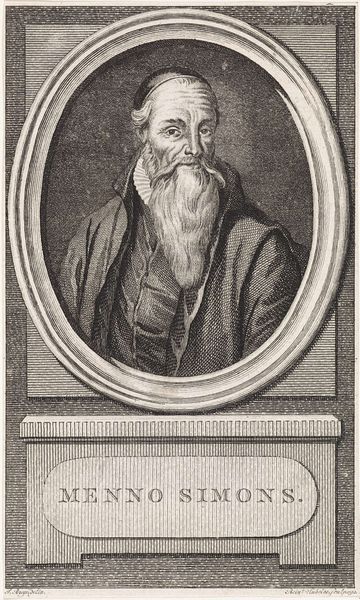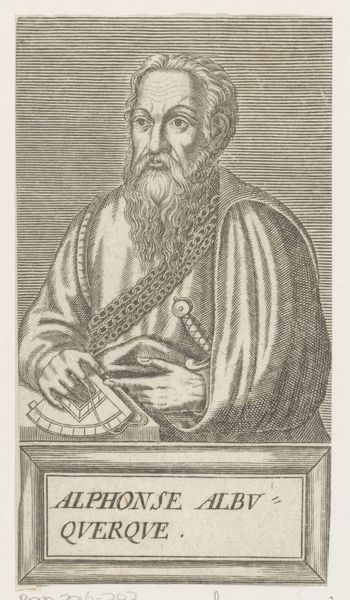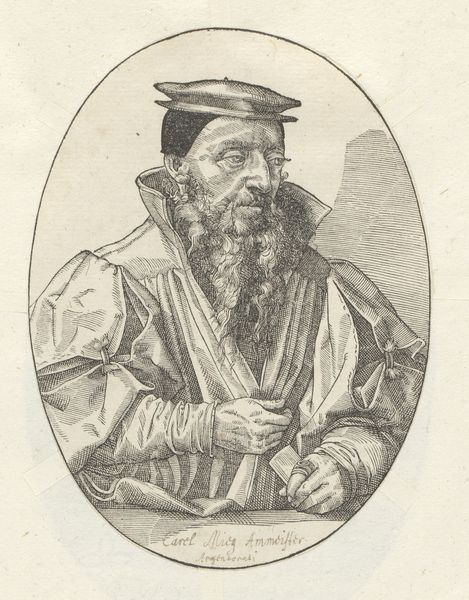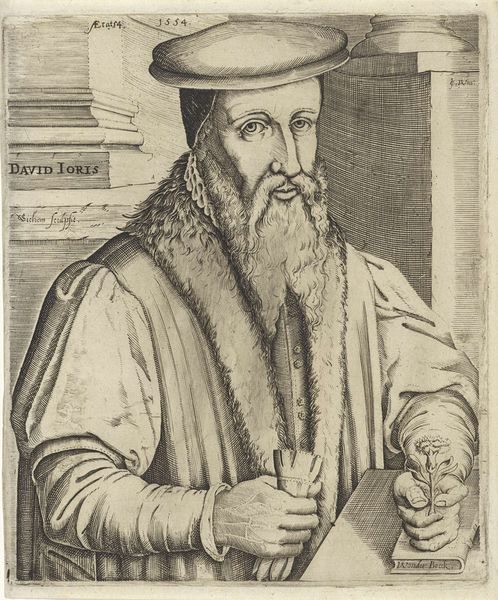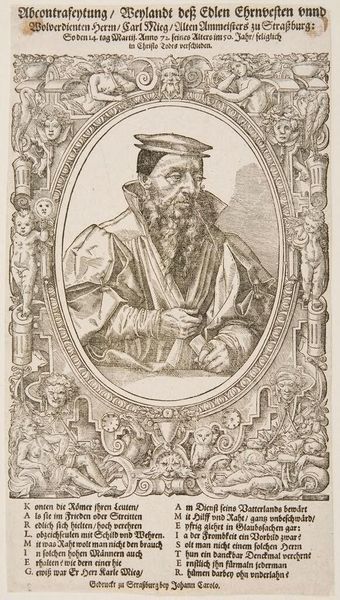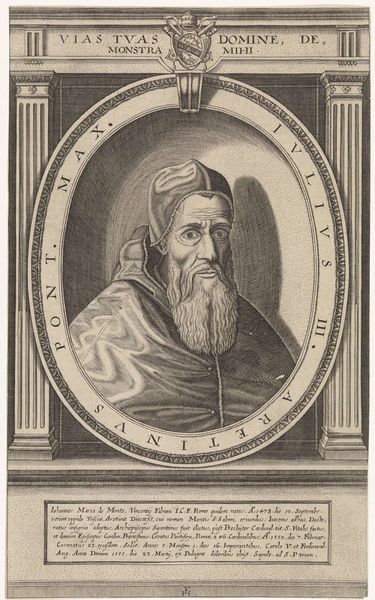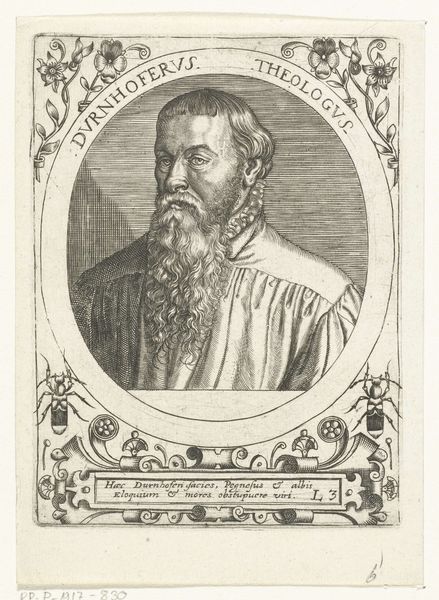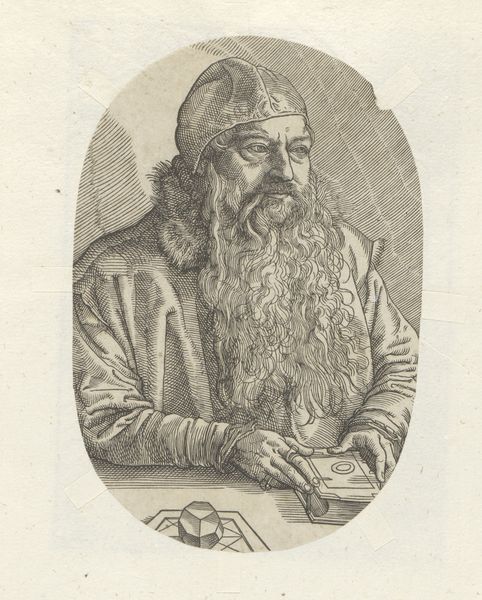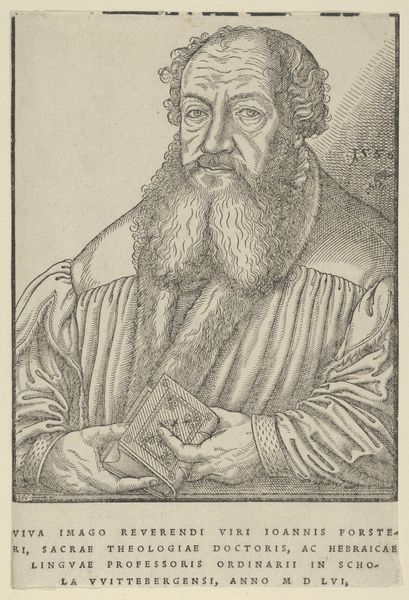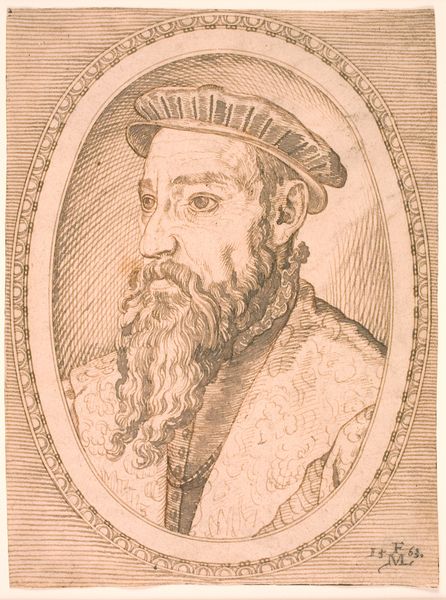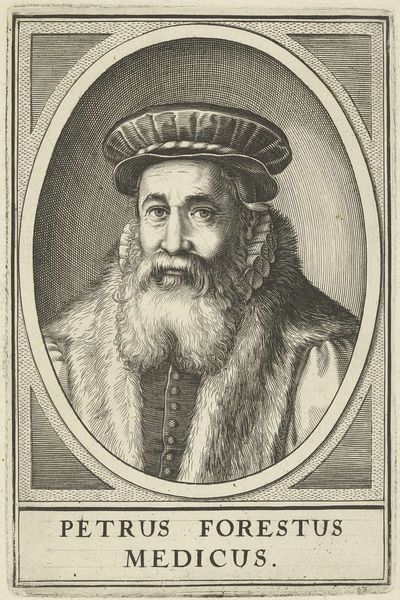
Copyright: CC0 1.0
Curator: Immediately, I'm struck by the weight of this man's gaze, the gravity in his eyes. It makes me wonder about the burdens of leadership and scholarship. Editor: Indeed. This is an anonymous portrait of Joachim a Beust, a legal scholar and advisor to the Elector of Saxony. The print offers us a glimpse into the visual language of power and status in the early modern period. Curator: It's more than just a portrait, though, isn't it? It is an example of how identity intersects with professional role in a very patriarchal context. How did Beust's position influence his representation, and how might that representation have shaped perceptions of his authority? Editor: Absolutely. The surrounding text and elaborate frame emphasize his noble status and erudition, reinforcing his position within the Saxon court. It's a constructed image of power, carefully curated for public consumption. Curator: That deliberate construction is key. It speaks volumes about the performative aspects of identity and the ways in which power is both claimed and conferred through visual representation. Editor: Precisely. Examining these details helps us understand the complex relationship between art, politics, and the shaping of historical narratives.
Comments
No comments
Be the first to comment and join the conversation on the ultimate creative platform.
